Yusi Zang, My Dad Used to Put Walnuts In the Door Crack and Close the Door to Crack Them Open, 2024, door handles, chestnuts, screws, 5 x 13 x 4.5 cm. Photograph: Tommaso Nervegna-Reed. Image courtesy of the artist and Cache.
Yusi Zang: Eating and Living; Tommaso Nervegna-Reed: Kellogg's: Colour Charts
Victoria Perin
It’s happening again. Just like they said it would.
You could write the whole history of Melbourne art as a battle between DIY tendencies and professionalising urges. A rash of DIY tendencies in art is a symptom of a recession, as the artist Peter Cripps once told us. While professionalism is elsewhere taken to be the universal mark of success, in Melbourne we have confidently flushed a lot of paper reviewing DIY galleries, ARIs, or whatever you want to call a place that’s open for four hours on Saturday and Sunday where you show your friends’ art. While we have studied artists’ self-organisation and self-curation, there has been less theorising about the more interesting proposition Cripps made in the 1980s, when he and his peers (such as John Nixon and Peter Tyndall) coined the category of Recession art. Recession art was not just a description of art made in hard times, it was really a category for Australian art in general, i.e. they’re all hard times here. “Recession Art refers to art which is made under the pressure of no money and a small market,” Cripps wrote in an exhibition text for Monash University Gallery in 1983: “It tends to be small, easy to produce, store and dispose of.”
I’m at Cache gallery. It’s run by artist Tommaso Nervegna-Reed and architect Andre Bonnice in a weathered personal library that once belonged to the local legend, architect Peter Corrigan, in the office of the firm Edmond and Corrigan on Little Latrobe Street. The firm means a lot to Australian architects, many of whom studied under Corrigan and visited him in his imposing library. Now vacated of books, the office is awaiting a restoration. In the meantime, the artists have slunk in. On the black library shelves, Nervegna-Reed has been hanging some of the best of Melbourne’s young artists since January, such as Hugo Blomley, Lilly Skipper, Carmen-Sibha Keiso, Katherine Botten, and more. I’m here to see Yusi Zang. Zang has hung cheap stainless steel bento tins around the room. On the windowsill is a contraption that screws four chestnuts between two plain drawer handles. Raw rice, glued in a PVA mound to make it seem cooked, is exploding from one of the lunchboxes. Quick vibe: Daiso crossed with Bunnings.
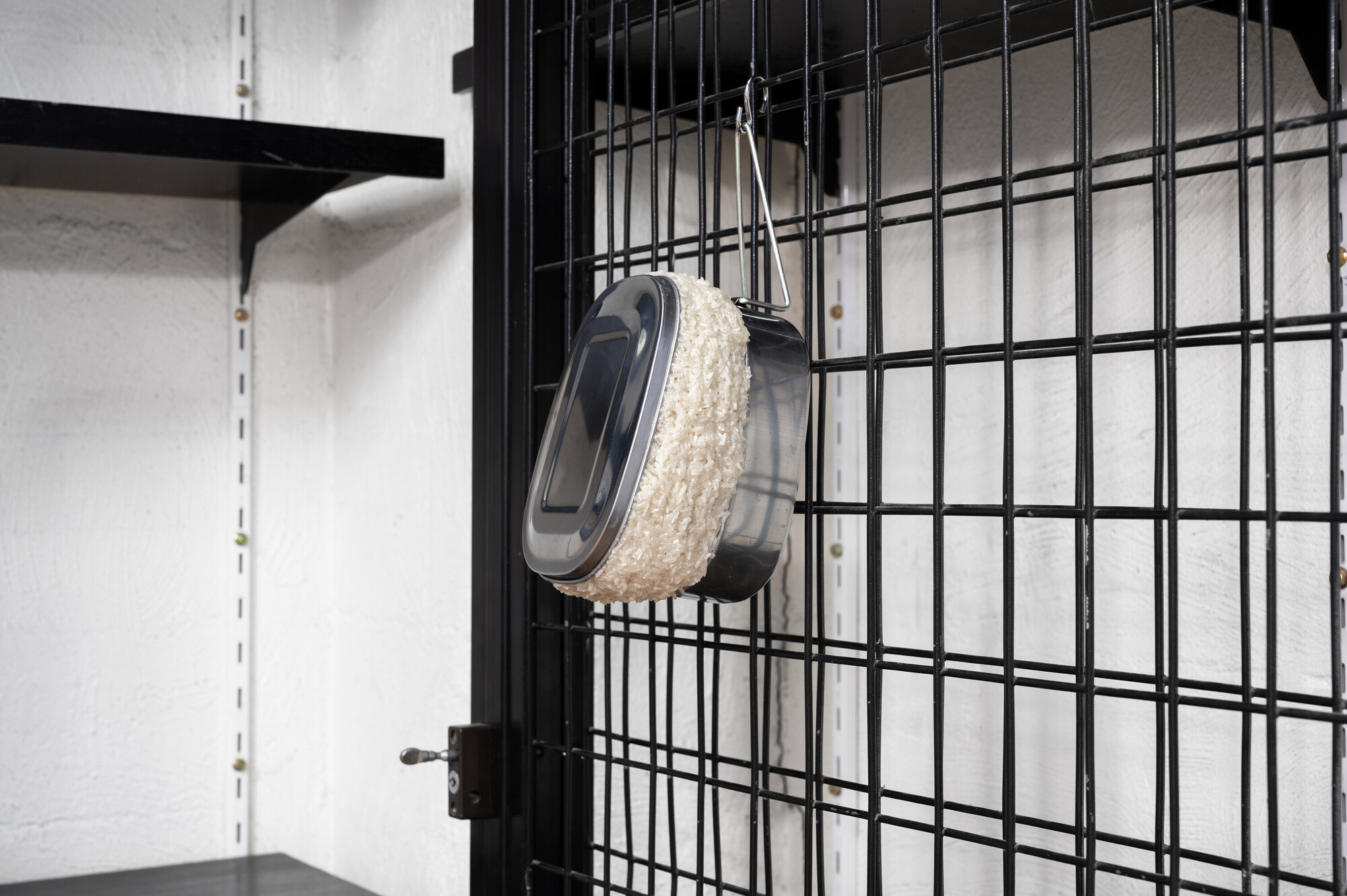
Yusi Zang, Hungry, 2024, lunch box, rice, PVA, 13 x 25 x 9 cm. Photograph: Tommaso Nervegna-Reed. Image courtesy of the artist and Cache.
Ephemeral garage/share house/garden galleries are easier to track than the aesthetically ephemeral art they exhibit. But, really, it’s not the galleries that are interesting per se: the art is getting left behind. It’s hard to describe artworks in this milieu without seeming to diminish or, worse, condescend, their aesthetic. I use DIY art when I mean something is handmade, maybe a bit rough and unelevated, with a non-professional or even amateur kind of aesthetic. This type of art is most likely to be presented as an invention of the artist, rather than an expression of their training. Taking cues from Cripps, the DIY artist reflects a culture that is indifferent to their activity, with work being made for a small audience of peers. The identification of DIY tendencies helps me to start thinking seriously about why a lot of Melbourne art is difficult to distinguish from rubbish. (And why it has always been this way).
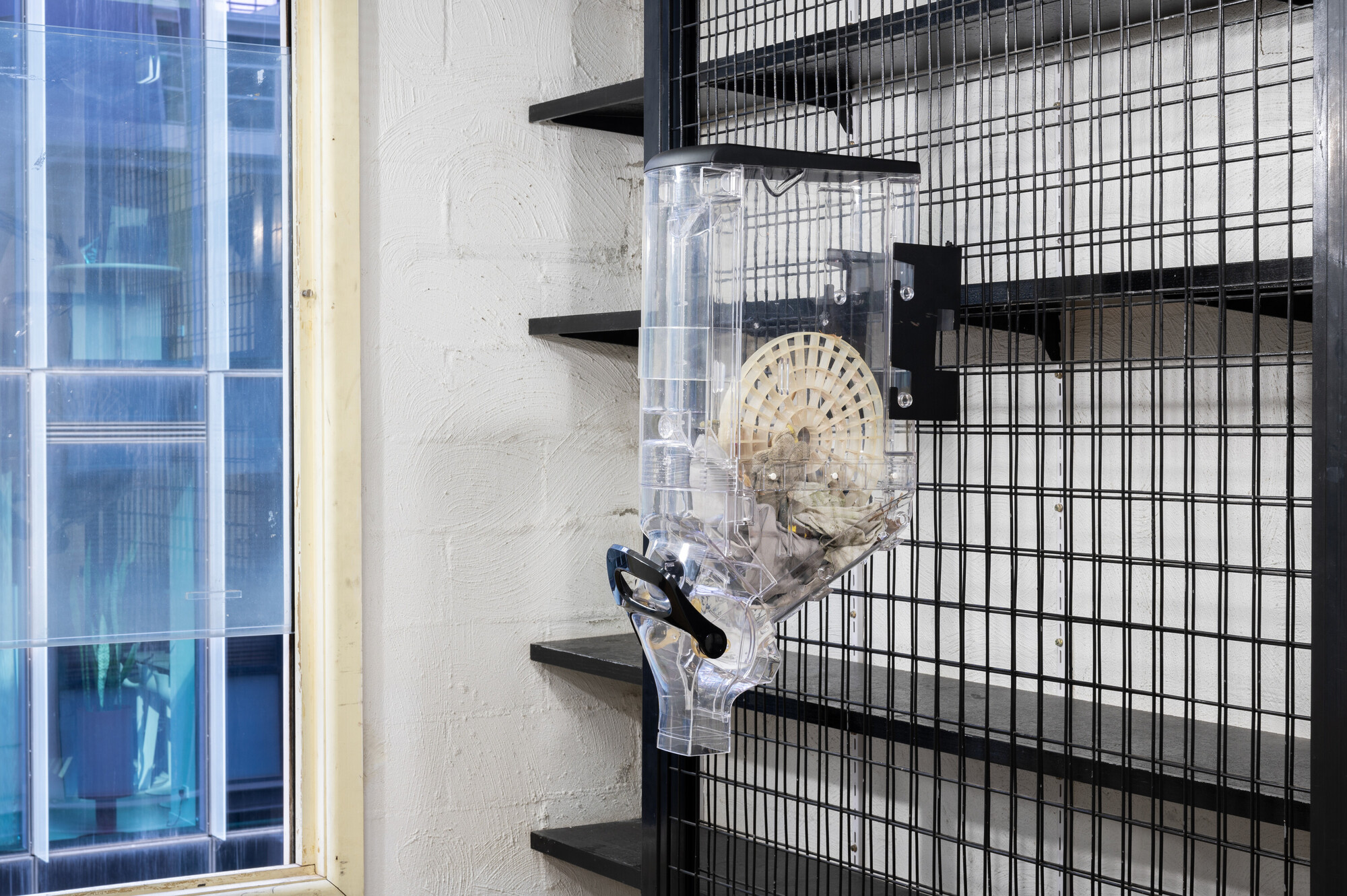
Tim Woodward, ZT-01bulk (1), 2024, objects fallen from apartment tower balconies and collected from city rooftops, acrylic dispenser, 71 x 43 x 15cm. Exhibited at Cache, 20-21 April 2024 Photograph: Tommaso Nervegna-Reed. Image courtesy of the artist and Cache.
As Recession art hesitantly admitted (via its preoccupation with found materials), DIY art has DIY aesthetics. There are certain repeated tropes and styles, but it’s all some variant of the near-at-hand. What about the renowned trope of leaving your possessions lying around on the floor? The quintessential Melbourne art experience of walking into a room to find loved/unloved garbage lying around? This gesture was exemplified by Dominico De Clario’s 1973 installation Two Hundred and Forty Choices in Twelve Days, where he took all the objects from his spare room and used the exhibition run to move them between two rooms in the Pinacotheca gallery in Richmond. I can’t see any young artists referencing this work, but Zang has a piece on display consisting of a box with wheels that contains all the offcuts created when the artist chopped her studio desk down into 30 × 30 centimetre bits. Zang, it turns out, is Nervegna-Reed’s partner; the box was made in 2016 and has since been standing in as their bedside table.

Yusi Zang, A Wooden Box Filled with Wood, 2016, school tables, hinges, dowel joints 40 x 32 x 32 cm. Photograph: Tommaso Nervegna-Reed. Image courtesy of the artist and Cache.
Despite the surplus of junk materials, you would be remiss to assume that apathy reigns in DIY art. Instead, ephemerality is often accompanied by apathy’s apparent inverse: fiddly solutions to the problems of making things no one ever taught you to make. DIY artists often become non-professional artisans, who appear to be reskilling in techniques like jewel-setting, casting moulds, patternmaking, resin pouring, basic ceramics, felting, etc. If you want to see the current apogee of this type of Melbourne artist, go to Joshua Petherick and Lewis Fidock’s show at 1301SW (which closes today), or Spencer Lai’s (which opens today at Neon Parc South Yarra).
“Do-it-yourself” is a phrase originating in post-War America, with handy-man products marketed to growing legions of suburban homeowners, before migrating to the counterculture ethos of the Whole Earth Catalogue in the 1960s and punk rock in the 1970s. After a lecture at the University of Melbourne, I once asked Reiko Tomii, the Japanese American art historian, why she insisted on the term “do-it-yourself” in her work on radical Japanese art in the 1960s. It’s such a sort of cumbersome phrase, I pressed. Yes, she answered, but DIY is an everyday term, and everyone knows what you mean when you use it. Tomii valued the usefulness of the term over its beauty.
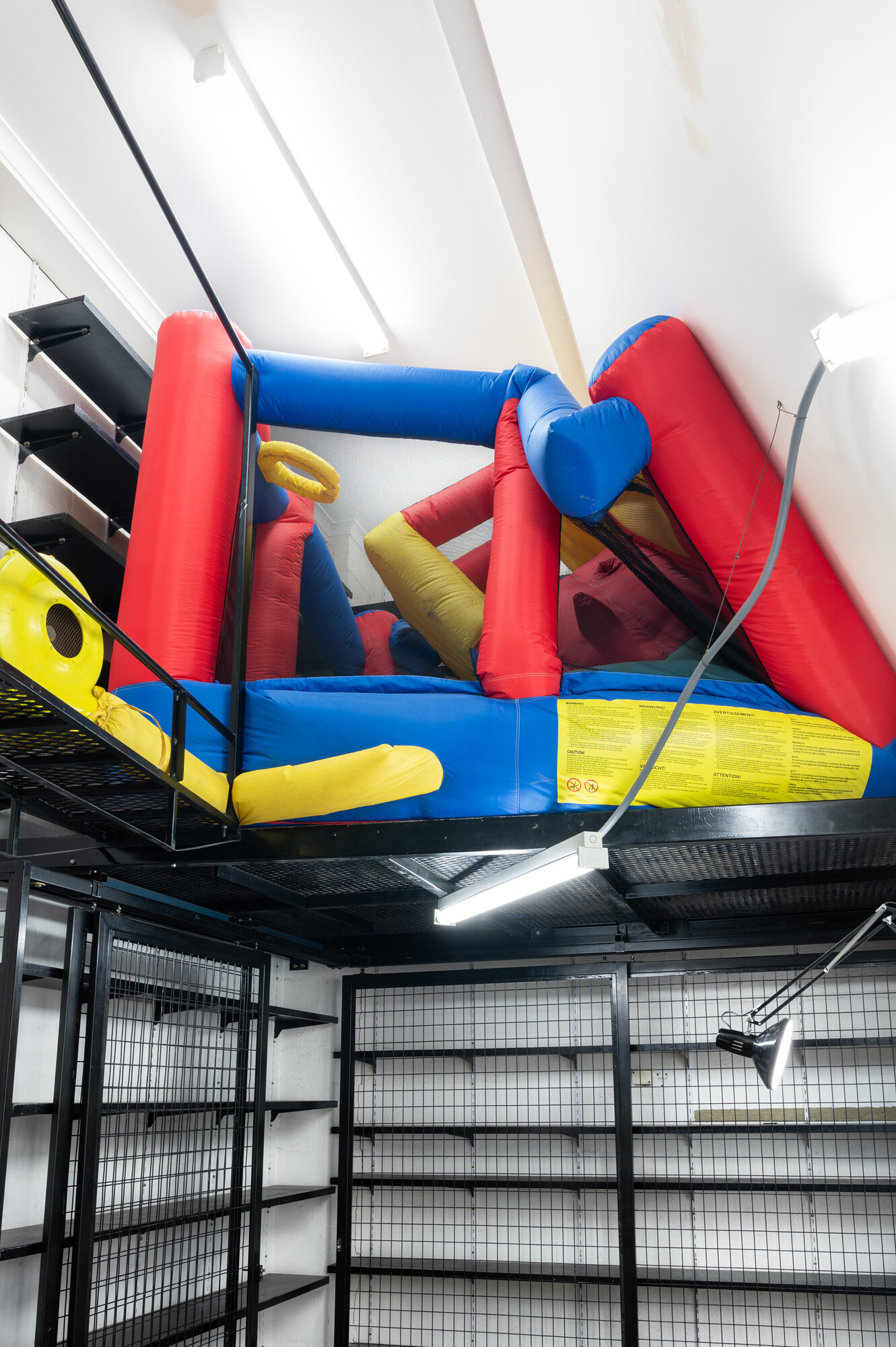
Lilly Skipper, Swell, 2024, inflatable jumping castle, dimensions variable. Exhibited at Cache, 12-13 May 2024. Photograph: Tommaso Nervegna-Reed. Image courtesy of the artist and Cache.
Tomii uses DIY to describe the fundamental structure of Japanese collectives such as the Gutai Art Association as well as their more regional counterparts, The Play and GUN (Group Ultra Niigata). We might spend too much time fixating on ARIs, but Tomii believes that artist-run galleries and collectives are important extensions of DIY art. That is because artists are “making both the art and the context for the art.” Or, in another equation, “DIY = wilderness.” You’re isolated in some physical and/or mental capacity. For Tomii, DIY is a statement expressing an artist’s position on the periphery. In the wilderness, you make your tools and then the house.
So, what tools do DIY artists have? Cripps called Recession art “an art based on intellect,” but this type of art is also particularly wedded to the object. In this way, DIY art is conceptualist art, but not Conceptual art. I’ve argued elsewhere that, in the 1970s, Melbourne artists avoided the modernist endgame of dematerialisation via their persistent interest in exploring manual skills and materials. It’s why you can’t find a purist Conceptual artist from Melbourne. And why the only one who came close, Ian Burn, renounced the movement explicitly on the grounds of its deskilling effect, which damaged the artist’s ability to make things with their hands. Cripps uses the magical term “conceptual expressionism” to describe the aesthetics of Recession art. That’s the hard-won, impure sort of logic we are talking about here.
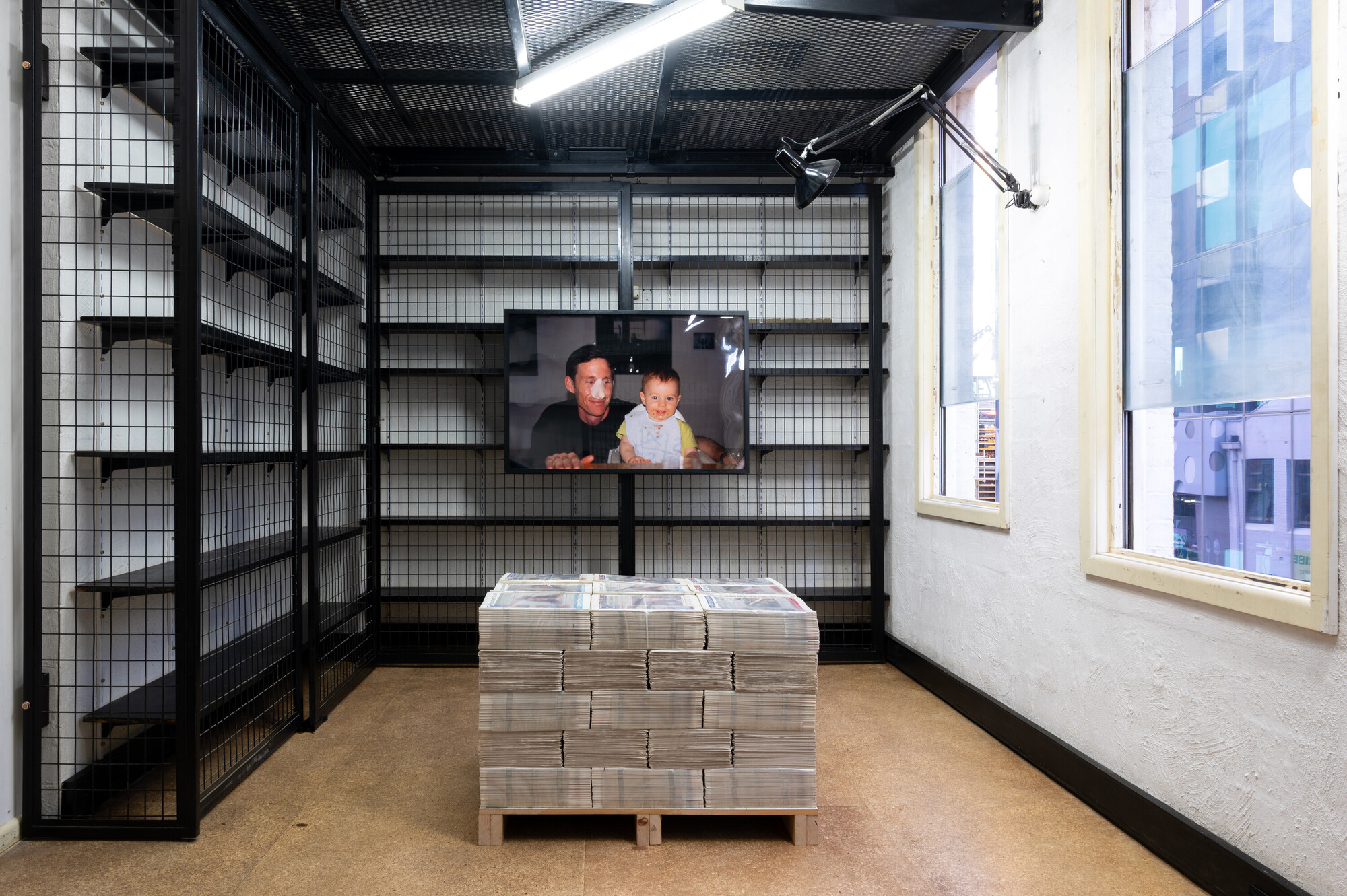
Stuart Ringholt: Conceptual Art Improved My Embarrassing Life, installation image featuring Embarrassed, 2003 and On Wednesday he wore a plastic nose, 2003. Exhibited at Cache, 2-3 February 2024. Photograph: Tommaso Nervegna-Reed. Image courtesy of the artist and Cache.
Zang’s exhibition has a short text by Theo Paphitis about Claude Lévi-Strauss’s anthropological theory that culture cycles through “raw,” “cooked” and “rotten” stages. Is Melbourne art culture “raw,” “cooked” or “rotten”? What kind of culture consistently produces ephemeral art and ephemeral galleries in this way? The art doesn’t hang around long enough to rot. Cache exhibitions are open for a single weekend. While the gallery gets an average of two to three emails a day from artists who want Nervegna-Reed to give them a show, when he sees his friends they tell him the pace of the gallery is too much. “Stop it,” they plead, “you’re stressing me out.” He also runs the Cathedral Cabinet space. Recently he installed four exhibitions in eight days, including a solo of his own work at Working at Heights, a gallery in Northcote run by Tim Woodward. Nervegna-Reed displayed some old venetian blinds, each slat carefully wrapped in gauze. That exhibition was open for a total of two hours.
All this speed disguises the fact that the history of DIY art extends so far back in Melbourne. It sails back past the Recession art era, with John Nixon being the canonical saint of the movement. For his part, David Homewood argues that the aping of home-builder’s DIY was a “strategy widely adopted in the Melbourne scene” already by the late 1960s. DIY also describes much of the art by figures claiming to be largely “self-taught” around Heide in the 1940s, not to mention local studio pottery traditions, art mags like A Comment, industrious artists like Michael O’Connell, and the related printmakers of the 1920s and 30s. Cripps recognised the Recession art strategies in the work of composer and electronic music pioneer Percy Grainger (1882–1961). In 1889, the 9 by 5 paintings were on cigar box lids. I’m not saying that professionalism does not exist in the art history of this place. But I am saying that DIY tendencies have been overlooked in favour of professionalised ones, and that this preference has distorted our assessment of major artists, permanently misshaping the canon.

Tommaso Nervegna-Reed, Kellogg’s: Colour Charts, Untitled (#4, 5 & 6), 2024, colour matched acrylic paint on Kellogg’s cereal box, 27 x 18 x 5.5 cm each. Exhibited at Cache, 2 June 2024. Photograph: Tommaso Nervegna-Reed. Image courtesy of the artist and Cache.
It’s difficult to find out about places like Cache, let alone review the art they show. This weekend there is a Beau Emmett show on Sunday, but not Saturday. Last weekend Nervegna-Reed had a gap in the schedule and hung his own work but did not bother to have an opening or opening hours. Existing for the installation shots, Kellogg’s: Colour Charts was comprised of six cereal boxes, painted with sample paint swatches of the colours featured in the Edmond and Corrigan office. When you walk up the stairs to Cache, one of the first things that catches your eye is a wishy-washy shade of green on the balustrade. Nervegna-Reed has nearly perfectly matched it. It’s a simple show: an abbreviated biography of Cache and a homage to the cult figure whose ghost haunts the space.
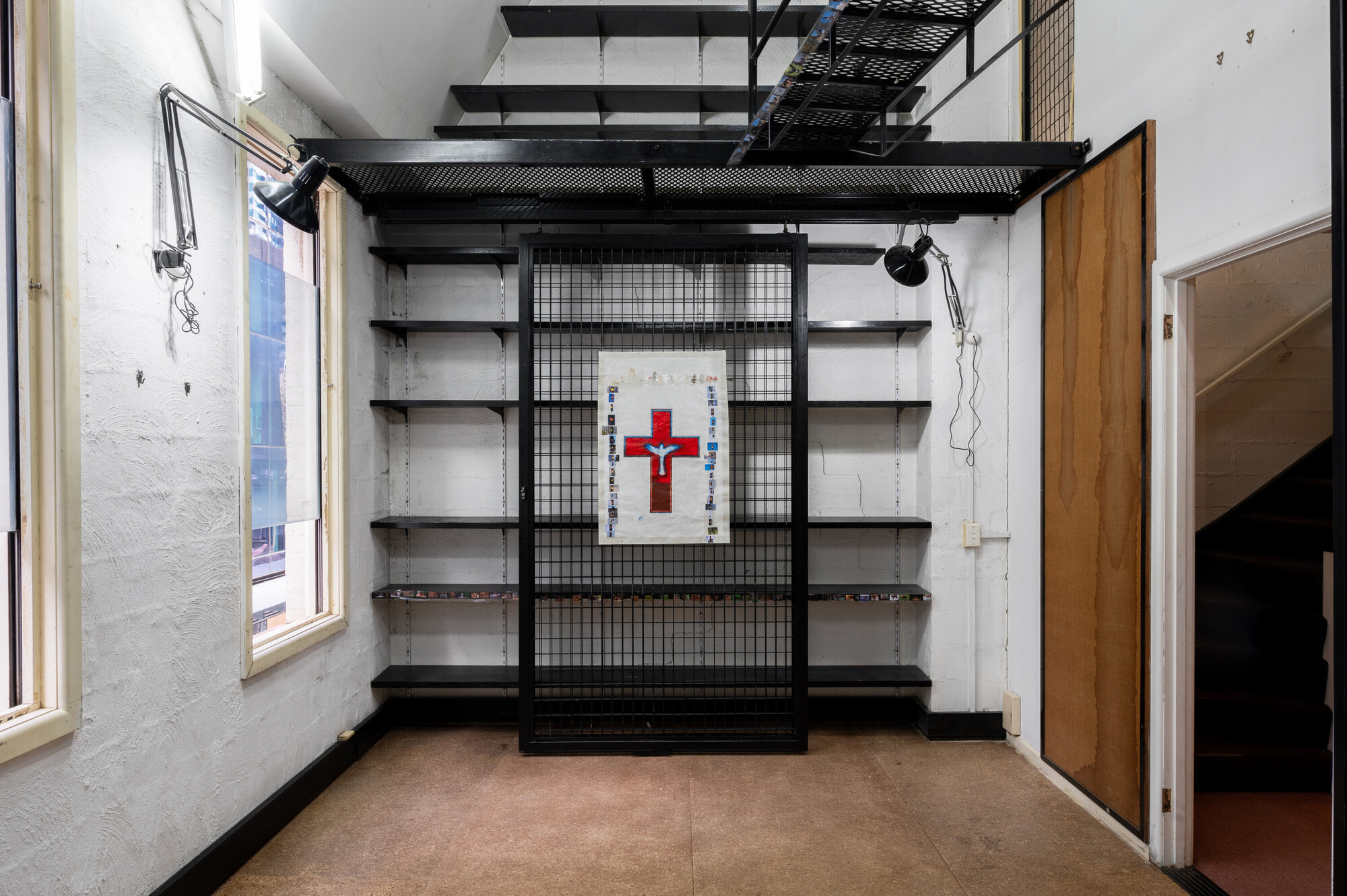
Katherine Botten, Christian Science, 2024, pencil, inkjet print, feathers, clear tape, acrylic and oil on rice paper, 93 x 63.5 cm. Exhibited at Cache, 16 March 2024. Photograph: Tommaso Nervegna-Reed. Image courtesy of the artist and Cache.
In his exhibition text, Paphitis riffs along with Lévi-Strauss, adding “fermented” and “preserved”’ to “raw,” “cooked,” and “rotten.” We have a preserved culture here, but a culture that doesn’t follow any originating figure (artistic tradition works in a funny way in a DIY community. John Nixon taught Nervegna-Reed, but Recession art was not on the syllabus). Cache is the latest expression of local tendencies that are guided by resourcefulness. But these tendencies also demonstrate how artists in Melbourne don’t cling to any particular theory, nor do they pass down any particular skill or convention. Instead, it seems that we are stuck with the eternal return of DIY art, an art that is optimistic, idealistic, forgetful, and ephemeral, as well as cool. Melbourne keeps its artists on ice, preserved in an indifferent environment somewhere between one and four degrees Celsius. There’s cool and then there’s cold. Turns out we’re both.
Victoria Perin recently completed a PhD at the University of Melbourne.


